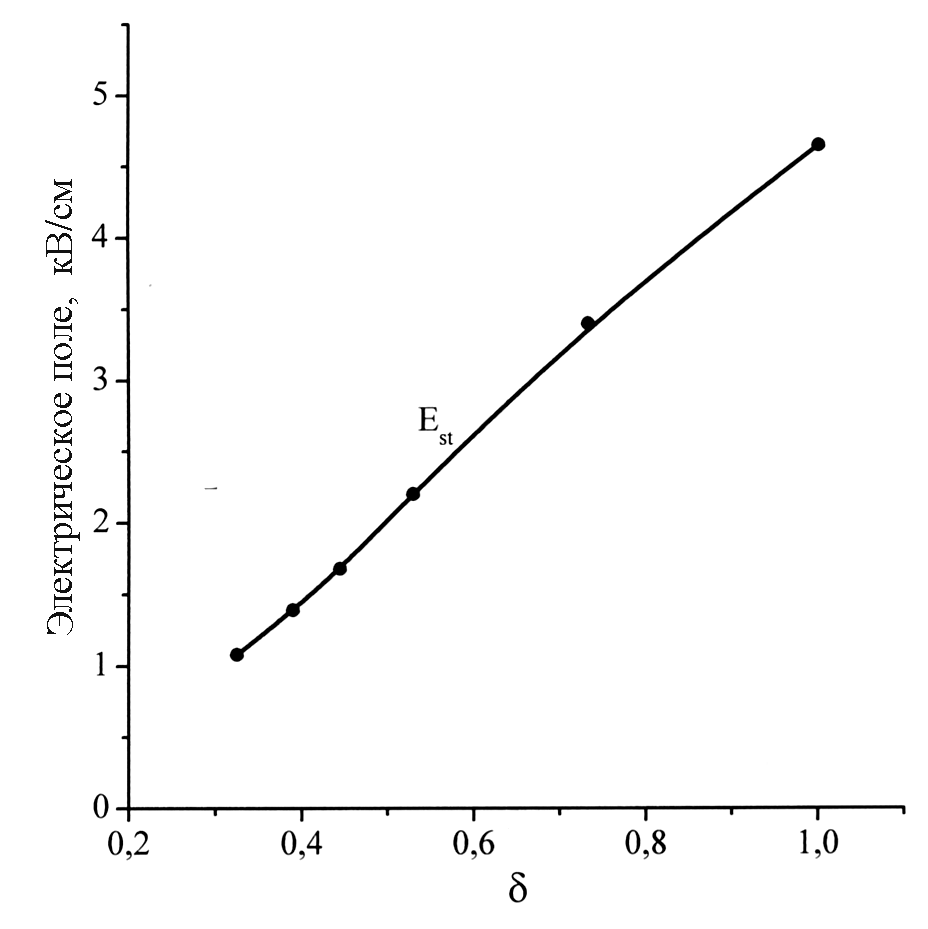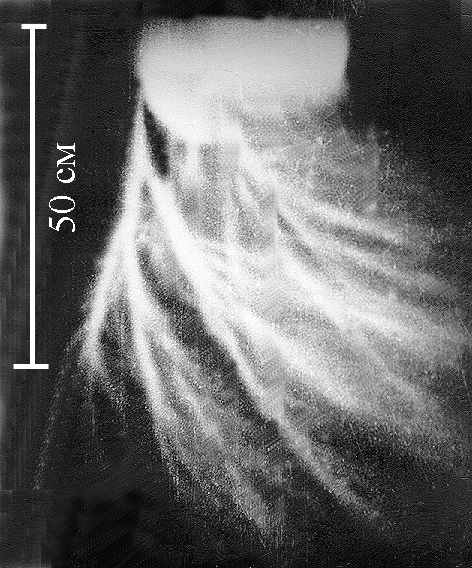From the series of articles "What Is Going On Up There?".
The first recording camera was directed beyond the storm front only at the end of the previous century, and even this was an accident. A rush began, as a result of which multiple enormous gas-discharging elements were securely recorded.

Fig. 4.
A schematic diagram of high-altitude electrical discharges.
ИОНОСФЕРА - IONOSPHERE
Высота, км - Altitude, km
Расстояние, км - Distance, km
МЕЗОСФЕРА - MESOSPHERE
СТРАТОСФЕРА - STRATOSPHERE
ТРОПОСФЕРА - TROPOSPHERE
Отрицательно заряженная вспышка «облако-земля» вблизи конвекционного ядра - Negatively charged flash “cloud-earth” near the convection core
ЭЛЬФЫ - ELVES
СПРАЙТЫ - SPRITES
Усики - Trolls
Чрезвычайно мощный грозовой разряд в направлении снизу вверх - An extremely powerful upward storm discharge
Обычный разряд «облако-воздух» - A typical “cloud-air” discharge
Область в атмосферном слое - Area in the atmospheric layer
Положительно заряженная вспышка «облако-земля» с «паукообразной молнией» - Positively charged flash “cloud-earth” with the “spider-like lightning”
Fig. 4 shows their stylized image that can be found over the Internet. I used it because I have never performed any research with high-altitude discharges. I am only interested in their relation to the conventional lightning. But we will talk about it a little bit later.
Blue jets are located nearest to the upper boundary of the thunderstorm front. Their name (jet means a stream) states that this gas-discharge element preserves its laced structure that is very similar to a conventional downward lightning leader. The channel ends up with a glowing area that is recognized by the long spark specialists as a leader streamer zone. Altitudes of conventional blue jets reach 40 to 50 km, while giant jets are up to 90 to 100 km high, generally touching the lower ionospheric boundary. Finally, "short" channels with the boundary height of 25 to 30 km were recorded. For some reason, they were called starters although they are not exciters of something more powerful. This way or another, all jet types are associated with the lightning distribution (or are lightnings?); therefore, they are interesting for the lightning protection. Anyway, the physicists are more interested in sprites that take an enormous volume and have the highest starting point.
The sprites with their bright reddish glow start almost from the lower ionospheric boundary, the altitude is 80 to 90 km, and distribute downward, to the earth for 30 to 40 km and more. Their highest starting portion is a continuous glowing area having a diameter of several dozens kilometers. At the altitude of less than 70 km, the discharge branching is recorded. High-speed cameras record the thick laced channels. To describe the sprites, the idea of streamers is used, which have been detailed in the laboratory under the atmospheric and reduced pressure. In particular, it was established that the average electrical field reduces rapidly for their development with the pressure decrease, for the cathode-directed streamers, it is 4.5 to 1 kV/cm in the range of variation of a relative air density δ = 1 – 0,3 (Fig. 5). There is no reason to suggest that this trend will not continue, thus providing a significant length of streamer channels.

Fig. 5.
The electrical field in the cathode-directed streamer channel versus the relative air density.
Measurements in the laboratory gap of 50 cm.
Электрическое поле, кВ/см - Electrical field, kV/cm
With respect to the streamer radius, the common statement that it is small is not true even in the normal air density. In fact, the radius is determined by the channel ionizing expansion that goes on until the electrical field strength reaches the ionization boundary, Ei ~ δ-1. With high voltage, the streamer radius is measured in centimeters also in normal atmospheric conditions (Fig. 6). Note that even in the lowest sprite boundary, the atmospheric air density was less than normal by about 3 orders of magnitude; therefore, the channel radius is measured not in centimeters but in many meters.

Fig. 6.
A powerful streamer flash in the normal air density.
50 см - 50 cm
E. M. Bazelyan, Dr. Sc. (Eng.), Professor
Krzhizhanovsky Energy Institute, Moscow
Read further 4. Mechanisms of upward penetration of a thundercloud field.
Related Articles:



